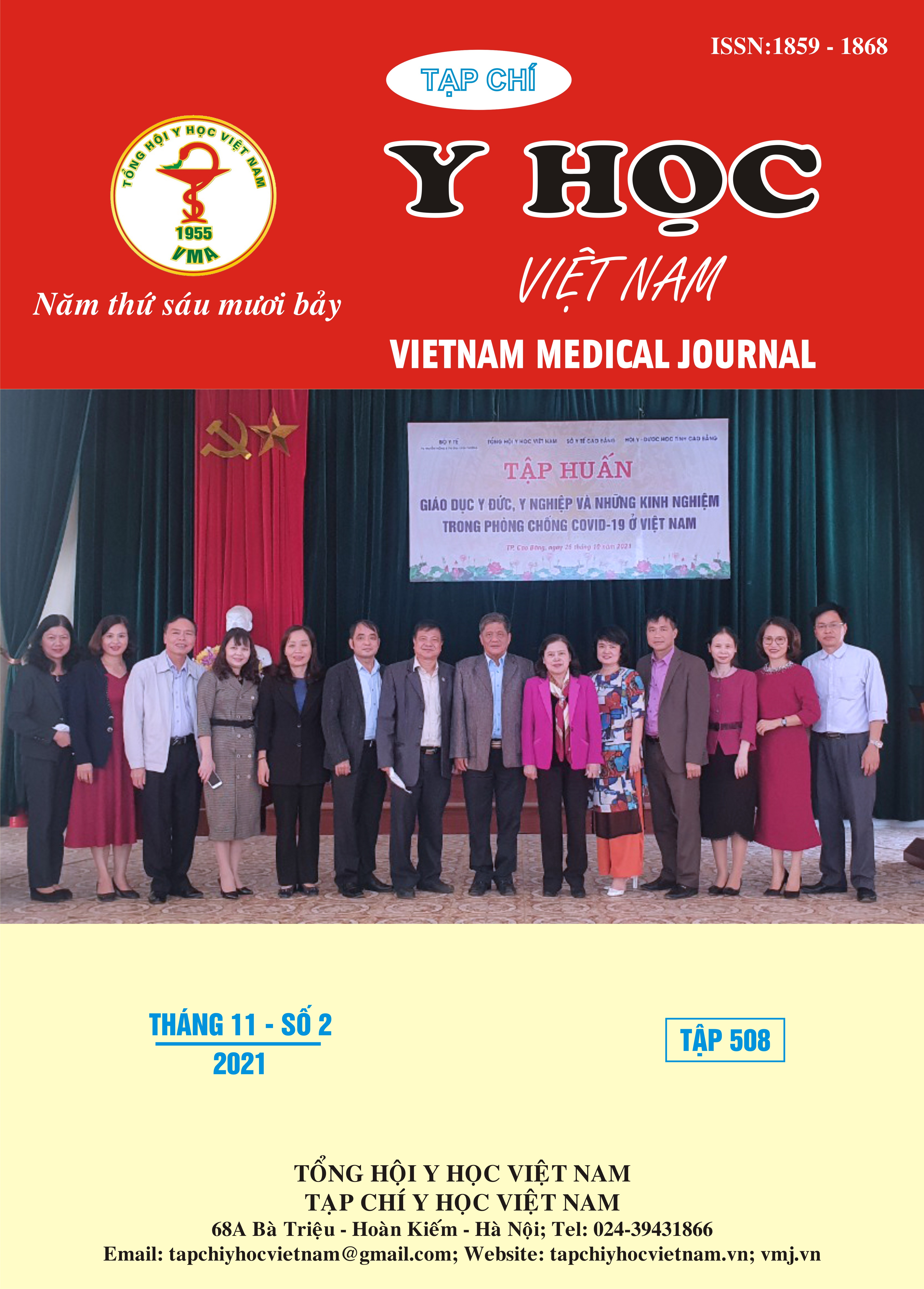EVALUATION OF THE LONG-TERM EFFECTIVENESS OF ANALGESIA AFTER CESAREAN SECTION BY LOCAL ANESTHESIA OF THE TRANSVERSE ABDOMINIS MUSCLE WITH A COMBINATION OF ROPIVACAINE AND DEXAMETHASONE
Main Article Content
Abstract
A randomized controlled clinical trial was conducted to evaluate the long-term efficacy of post-cesarean section analgesia at transverse abdominis muscle with a combination of ropivacaine plus dexamethasone. The study was conducted on 100 patients at Hanoi Obstetrics and Gynecology Hospital. Results showed that the first rescue analgesic was significantly shorter in group 1 (11.01 ± 3.62 hours) compared to group 2 (18.54 ± 4.15 hours) (p<0.05). Total morphine requirement in the first 24 hours after surgery was significantly higher in group 1 (5.62± 2.1 mg) than in group 2 (4.07± 1.9 mg) (p < 0.05). VAS-S and VAS-V scores of both groups were not significantly different at 1 hour, 2 hours and 4 hours after surgery, however, the score in group 1 was significantly higher than group 2 after 8 hours, 12 hours, 16 hours and 24 hours after surgery. The rate of vomiting in group 1 accounted for 20% which was much higher than group 2 with only 4%, p < 0.05. The clinical indices related to circulation were within normal limits and were similar between the two groups at 1 hour, 2 hours, and 4 hours of the study. Mean heart rate, blood pressure at 8 hours, 12 hours, 16 hours and 24 hours after surgery were significantly higher in group 1 than in group 2 patients (p < 0.05). The clinical parameters related to respiration were within normal limits and were similar between the two groups at all study time points. In our study, there were no complications related to TAP block anesthesia.
Article Details
Keywords
analgesia, cesarean section, ropivacaine, dexamethasone
References
2. Uma Hariharan và Vinoth Natarajan (2017), "Rectus Sheath Block and Transversus Abdominis Plane Block for Pain Relief after Cesarean Section".
3. Zhirajr Mokini Poturljan (2011), Ultrasound Blocks for the Anterior Abdominal Wall Principles and Implementation for Adult and Pediatric Surgery. 2011 Edition.
4. P. Hebbard (2015), "TAP block nomenclature", Anaesthesia, 70(1), tr. 112-3.
5. C. Pehora, A. M. Pearson, A. Kaushal và các cộng sự. (2017), "Dexamethasone as an adjuvant to peripheral nerve block", Cochrane Database Syst Rev, 11(11), tr. Cd011770.
6. A. Zorrilla-Vaca và J. Li (2018), "Dexamethasone Injected Perineurally is More Effective than Administered Intravenously for Peripheral Nerve Blocks: A Meta-Analysis of Randomized Controlled Trials", Clin J Pain, 34(3), tr. 276-284.
7. A. Gupta, A. Gupta và N. Yadav (2019), "Effect of dexamethasone as an adjuvant to ropivacaine on duration and quality of analgesia in ultrasound-guided transversus abdominis plane block in patients undergoing lower segment cesarean section - A prospective, randomised, single-blinded study", Indian J Anaesth, 63(6), tr. 469-474.
8. P. L. Petersen, O. Mathiesen, P. Stjernholm và các cộng sự. (2013), "The effect of transversus abdominis plane block or local anaesthetic infiltration in inguinal hernia repair: a randomised clinical trial", Eur J Anaesthesiol, 30(7), tr. 415-21.


